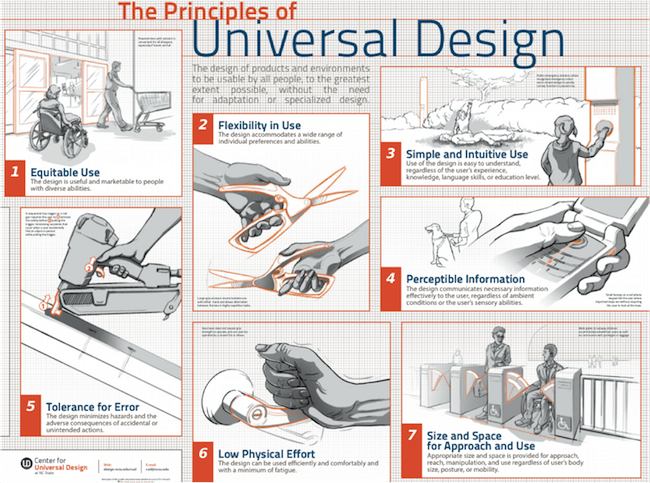The graphic below is from Home Remodeling for People with Disabilities: What You Need to Know — from expertise.com by Michael Sledd; with thanks to Grace Valladolid for the resource
Per Grace:
- This a comprehensive guide for people living with disabilities. It aims to help make the federal grants available to seniors, veterans, and people with cognitive and physical disabilities much easier to understand and take advantage of, particularly for remodeling homes for accessibility.
- Expertise.com exists to help people make truly better decisions by clearly laying out their options, with content written by industry experts.
For another version of this graphic, see:
http://www.ncsu.edu/ncsu/design/cud/pubs_p/docs/poster.pdf
From DSC:
The graphic provides a great visual summary of the principles of Universal Design.
Note how these concepts are applicable in the realm of learning — per Wikipedia:
The concept and language of Universal Design for Learning was inspired by the universal design movement in architecture and product development, originally formulated by Ronald L. Mace at North Carolina State University.[5] Universal design calls for “the design of products and environments to be usable by all people, to the greatest extent possible, without the need for adaptation or specialized design”.[8]
These concepts benefit all learners. This is why I’m big on more choice, more control — and providing content in as many ways as possible, while offering as many pathways to successfully meeting the learning objectives as possible.









